Before we begin, let's take a moment to ponder the absurdity of a system in which:
a) for-profit corporations are allowed to call themselves "agencies";
b) the government -- that is, us -- has given these for-profit companies trillion-dollar influence over the financial system; and
c) these "agencies" are paid by the very financial institutions whose work they're expected to review objectively -- institutions who will take their business elsewhere if their products aren't rated highly .
We gave these "agencies" all this power, along with a huge financial incentive to rate garbage as if it were roses. Then we, in the form of government regulators, looked the other way. And now we're shocked -- shocked! -- that these for-profit companies were behaving... well, like for-profit companies.
There's an extremely strong case for fraud in the government's new lawsuit against Standard & Poor's. The suit says S&P lied to the SEC in order to be certified as a credit rating agency, and that it lied to investors about the objectivity and thoroughness of its reviews. It also alleges that S&P knew that some of the mortgage-backed securities it rated "AAA" were, in fact, lousy investments, and gave them that rating anyway to keep the bank's business.
Body of Evidence
There's a lot of compelling evidence in the lawsuit. Much of it is taken from the Senate's Permanent Subcommittee on Investigations, chaired by Sen. Carl Levin, which we reviewed in detail in "The Rating Game" and "Poor Standards."
One email exchange shows that an analyst was pressured by S&P to improve a rating for their "customer," and when the analyst offered a somewhat higher score he was "I don't think that will be enough to satisfy them." When another analyst asked to look at some files for a review, which is the standard way of doing things, he was told that his request was "totally unreasonable!"
S&P isn't just ethically challenged. It's also lousy at what it does. When it downgraded U.S. debt in 2011, for example, the Treasury Department found a $2 trillion error in S&P's calculations. S&P simply deleted the error from their report, then wrote up a completely different rational for their downgrade - one that relied on unmeasurable and intangible considerations. To the trained eye that suggests they'd already picked a number and they were now making up reasons to justify it.
A billion here or there is one thing. But a trillion? That's just plain sloppy. As long as that kind of workmanship is driving our financial system, this lawsuit is important. Here are five takeaways from this action:
1. Ratings Agencies Are Very Important -- and Very Broken
Ratings agencies are given enormous responsibility and enormous power. Some investments are required by law to invest in only "AAA" financial products. Others, like many pension funds, have made the decision to stick to these (supposedly) safe investments exclusively.
S&P and other ratings agencies took banks' money in return for rating their mortgage-backed securities "AAA." Many of those securities were a form of organized fraud that was perpetrated on investors. These securities were such an easy way to earn money that they drove the housing bubble: Banks didn't want to know if a borrower was a bad risk, because they could just bundle the loan with a lot of other equally doubtful ones and sell them all off to unwary investors.
That's a guaranteed way to make money -- for a while -- as long as the rating agencies were guaranteed to give these worthless investments a "AAA" rating. And they were. That places the rating agencies at the heart of the financial crisis, the recession, and all the loss that resulted from those events.
That's as important, and as broken, as it gets.
2. The Naysayers Are Wrong. There's a Very Strong Case Against S & P
S &P's attorney, Floyd Abrams, took to the court of public opinion to defend his client on CNBC. Abrams argued that everybody believed these mortgage-backed securities were good, including Treasury Secretary Hank Paulson and the Federal Reserve.
But Standard & Poor's sells a technical service. It isn't paid all that money to repeat the conventional wisdom. And yet, within a year Standard & Poor's was forced to downgrade many of these "AAA" investments to junk status. Apparently one of their key lines of defense will be: We weren't crooked, just incompetent.
Besides, it isn't true that "everybody" believed these investments were strong. Did Standard & Poor's conduct any research into the work of the many economists who publicly said there was a housing bubble, as it continued to give these investments a "AAA" rating? I think we know the answer to that one.
The "incompetence" defense also fails to address the many emails and internal documents showing that sales, not accuracy, was the organization's prime concern.
Abrams flirts with, but doesn't embrace, the right-wing argument that this lawsuit is driven by revenge against S&P for downgrading the Federal debt. But that downgrade didn't weaken the government's ability to get cost-free loans, so there was no harm. And that was two years ago, which would make this a very delayed act of revenge.
Abrams and S&P are also trying to defend its actions on First Amendment grounds, claiming that they're journalists. Other agencies have tried this defense. But journalists aren't "agencies." They're not given the authority to rate something, with billion-dollar implications. If these agencies were journalists, they'd have no product to sell.
A skeptical piece about the lawsuit from Peter J. Henning and Steven M. Davidoff in the New York Times also misses the mark. They write:
"The government will have to prove that ratings were in fact faulty, and published intentionally so as to deceive investors in the securities. In response, S.& P. could simply argue that the company was just as blinded by the financial crisis as anyone else, and that questionable emails are simply the work of lower-level employees who were not involved in the decision-making."
This is Abrams' "nobody saw it coming" argument. But that's not what the government is alleging. The lawsuit shows that S & P claimed to have internal quality control standards, objectivity, and rigid methodology, that it made those claims in order to make money - and that it knew these claims weren't true.
The issue isn't whether S&P was as "blinded" as everyone else. The issue is whether it lied when it claimed to have better vision.
3. Political Pressure Works
This lawsuit might never have been filed if it had not been for the hard work of Sen. Levin's Subcommittee.
And it might not have been filed, or the government might have settled for a smaller fine, if there hadn't been so much public demand for a tougher stand against those who brought down the economy.
Finally, there's a case where the government wouldn't settle for peanuts. That's a pleasant surprise. It also shows that political pressure - whether from elected officials or the public at large - works.
4. Civil Cases Are Important
Republican Senator Charles Grassley, who has made some surprisingly good stands on banking issues, was dismissive because this is a civil suit and not a criminal prosecution. But this suit is already important, because it's brought many important facts to the public's attention. And it's put the agencies on notice that there will be consequences for putting profits over performance.
And a civil suit seems like the right place to start. We've certainly hammered the Justice Department time and time again over its refusal to bring criminal cases against Wall Street bankers. That was, and is, outrageous. But the burden of proof's a little different here. What makes the lack of banker prosecutions so outrageous is the fact that the banks have paid hundreds of billions in fines for fraud -- then committed the same kinds of fraud again.
Those settlements have created an enormous body of evidence regarding bankers' crimes. That's not true in this case. Not does this lawsuit preclude criminal cases in the future. Hopefully they'll be coming.
5. We Need to Dismantle the Entire "Credit Ratings Agency" System
In the end, however, the real lesson is this: The entire system of "credit rating agencies" is broken. The Franken Amendment, which initially took away the most egregious salesmanship in the process, was downgraded to a requirement that the SEC conduct a study into rating agencies and make recommendations.
The SEC study found a lot of flaws, but the SEC has yet to take action. Instead the proposed set of regulations required by Dodd-Frank is being slow-walked to death.
That means nothing's really changed: Credit rating agencies are still paid by the ultra-wealthy institutions they rate. Agency employees still have a revolving-door relationship with the banks, and so do the people who supervise the agencies.
Until the profit motive is removed from the agency process, the system will remain broken. In the meantime this lawsuit is at least a hopeful sign, and a step in the right direction.
